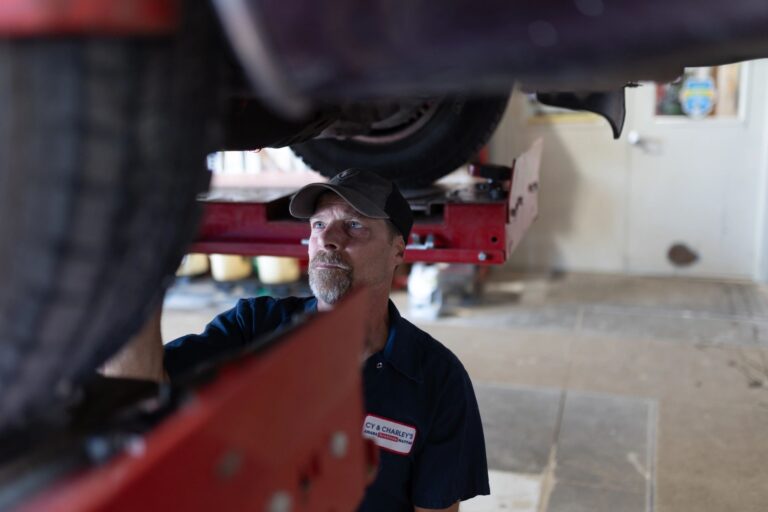Can a Brake Light Switch Affect Acceleration?

When it comes to vehicle performance, many drivers focus on components like the engine, transmission, and brakes. However, some smaller yet critical parts can play a role in how your car operates. One such part is the brake light switch. While its main job is to activate the brake lights when you press the brake pedal, you might be wondering, “Can a brake light switch affect acceleration?”
The answer is yes—in certain cases, a malfunctioning brake light switch can affect how your vehicle accelerates. In this article, we’ll explore how this seemingly simple component can influence acceleration, the signs of a bad brake light switch, and how to address the issue.
What is a Brake Light Switch?
The brake light switch is a small, yet crucial, component in your vehicle’s braking system. It is typically located near the brake pedal and activates the brake lights whenever you press the pedal. The switch itself is an electrical component that sends a signal to the vehicle’s lighting system to turn on the brake lights.
In addition to activating the brake lights, the brake light switch plays a role in other functions, such as:
- Cruise control: Disables cruise control when the brake pedal is pressed.
- Transmission: In some vehicles, the switch can communicate with the transmission to control shifting behavior, especially in automatic transmission vehicles.
While the brake light switch doesn’t directly impact engine performance, it is connected to several important systems that can indirectly affect how the car accelerates.
How Can a Faulty Brake Light Switch Affect Acceleration?
A faulty or malfunctioning brake light switch can lead to a number of issues that may interfere with your car’s ability to accelerate smoothly. Here are a few ways a bad brake light switch can affect your vehicle’s acceleration:
1. Cruise Control Malfunction
In many vehicles, the brake light switch is linked to the cruise control system. When you press the brake pedal, the switch tells the car’s computer to disengage cruise control, preventing the car from continuing at a set speed.
If the brake light switch is faulty, it may cause the cruise control to malfunction. For instance, the cruise control may not disengage when you apply the brakes, which can cause unexpected acceleration or prevent you from slowing down properly. This can lead to poor acceleration control.
2. Transmission Issues
In automatic transmission vehicles, the brake light switch can also be connected to the shift interlock system, which prevents you from shifting the transmission out of “Park” without pressing the brake pedal. If the brake light switch is malfunctioning, the vehicle may not allow the transmission to shift properly, causing issues with acceleration.
In some cases, a bad brake light switch could also send incorrect signals to the transmission, affecting its shifting behavior. This may cause the vehicle to hesitate or jerk during acceleration.
3. Engine Performance Issues
While less common, a malfunctioning brake light switch can sometimes cause engine performance problems. In certain cases, the switch’s failure may interfere with the vehicle’s computer system (ECU), which controls engine timing, throttle response, and other performance-related aspects. This could lead to issues such as lagging acceleration, stalling, or rough engine performance when trying to accelerate.
4. Overactive Brake Lights
Another consequence of a faulty brake light switch is the possibility of the brake lights staying on constantly, even when you’re not pressing the brake pedal. This can confuse other drivers and potentially lead to accidents. Additionally, the vehicle’s computer system may interpret this as a signal to limit acceleration to ensure safety, leading to sluggish acceleration.
Signs of a Faulty Brake Light Switch
If your car is experiencing acceleration problems, it’s worth checking the brake light switch. Here are some signs that the switch might be faulty:
1. Cruise Control Stops Working
If the brake light switch is not working properly, your cruise control may disengage at inappropriate times or not work at all when needed. This can be a sign that the switch is failing.
2. Brake Lights Stay On
If your brake lights remain illuminated even when you’re not pressing the brake pedal, it could be a sign of a malfunctioning brake light switch. This issue can also prevent the car from accelerating properly and create confusion for other drivers.
3. Difficulty Shifting Gears
If you have an automatic transmission and notice that the car won’t shift out of “Park” or is difficult to shift, it could be due to a faulty brake light switch interfering with the shift interlock system.
4. Acceleration Hesitation or Stalling
If your vehicle hesitates or stalls during acceleration, a malfunctioning brake light switch could be affecting the engine’s performance or the transmission’s ability to shift gears correctly.
5. Check Engine Light
Sometimes, a faulty brake light switch will trigger the check engine light. If this happens, it’s a good idea to have your car’s computer system checked for error codes to confirm whether the brake light switch is the culprit.
How to Fix a Malfunctioning Brake Light Switch
If you suspect your brake light switch is affecting acceleration or causing other issues, it’s important to address the problem as soon as possible. Here’s how to fix a faulty brake light switch:
1. Inspect the Brake Light Switch
Check the brake light switch for visible damage or wear. If the switch is loose or broken, it may need to be replaced. You can usually locate the switch near the brake pedal assembly.
2. Test the Brake Light Switch
To test the brake light switch, press the brake pedal and check if the brake lights illuminate. If the lights don’t come on, the switch may need to be replaced. You can also test the switch’s electrical signal with a multimeter to see if it’s functioning correctly.
3. Replace the Brake Light Switch
If the brake light switch is faulty, replacement is the best solution. Here’s how to replace the switch:
- Locate the switch: Find the brake light switch, typically mounted near the brake pedal.
- Disconnect the power: Before working on the switch, disconnect the car’s battery to avoid any electrical issues.
- Remove the old switch: Depending on the design, you may need to unscrew or unclip the switch from its mounting bracket.
- Install the new switch: Install the new brake light switch, ensuring it’s securely mounted and aligned with the brake pedal.
- Reconnect the battery: After installing the new switch, reconnect the car’s battery.
- Test the system: Press the brake pedal and ensure the brake lights turn on properly. Test the vehicle’s acceleration and cruise control functions to ensure everything works as expected.
Conclusion
In conclusion, a malfunctioning brake light switch can affect acceleration in certain situations, especially when it interferes with the vehicle’s cruise control, transmission, or engine performance. If your car is experiencing issues such as hesitation during acceleration, difficulty shifting gears, or malfunctioning cruise control, the brake light switch may be to blame.
Regularly checking your brake lights and ensuring your switch is in good working condition can help prevent these issues. If you notice any of the symptoms mentioned above, it’s essential to have the brake light switch inspected and replaced if necessary to maintain smooth acceleration and overall vehicle performance.
Also Check:
• Can a Crankshaft Sensor Cause No Start?





